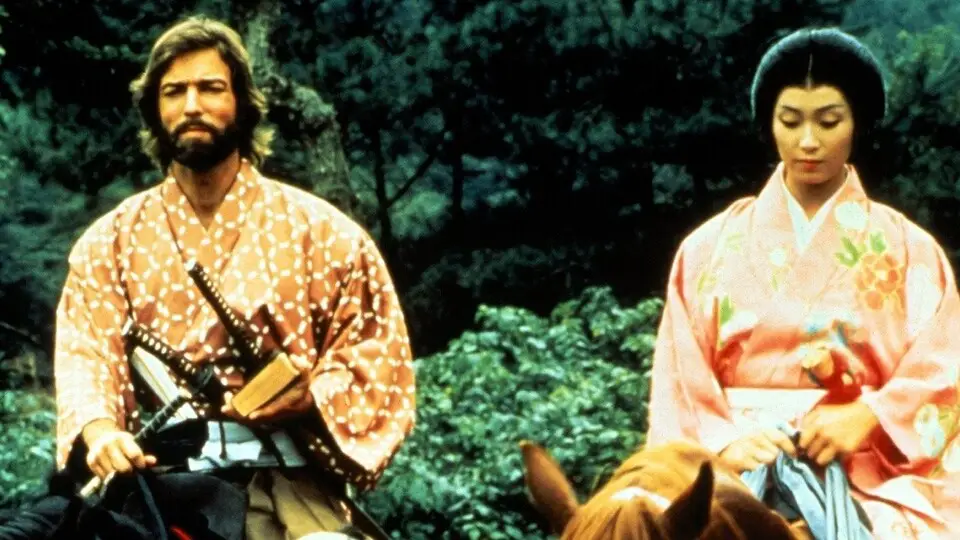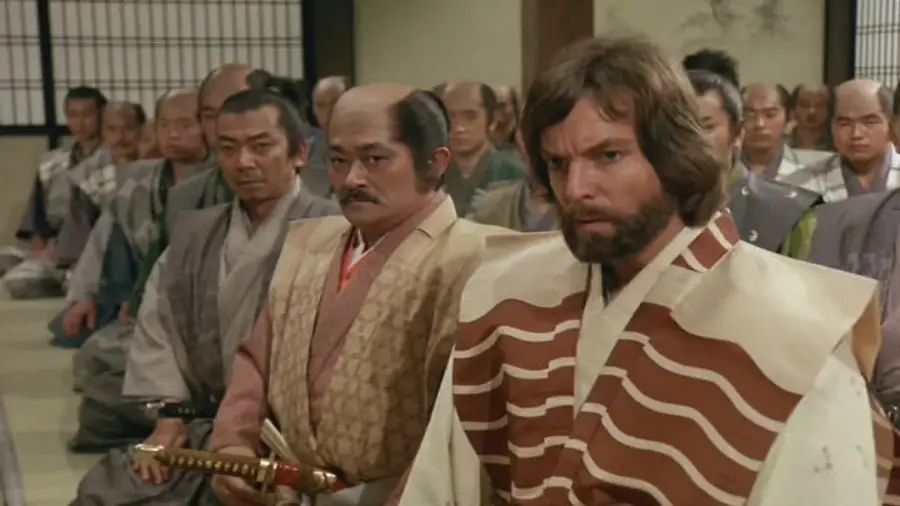The “Shogun” TV series, based on James Clavell’s 1975 novel of the same name, made a significant impact when it premiered in 1980. This epic miniseries, which intricately depicts the complex political and cultural landscapes of feudal Japan through the eyes of an English navigator shipwrecked on its shores, remains a landmark in television history. (Get the book from Amazon – link here.)
Here are 10 shocking facts about the “Shogun” TV series that continue to fascinate viewers and critics alike:
1. Unprecedented Production Scale
“Shogun” was one of the most expensive TV projects of its time, with a budget that far exceeded most other television productions. Its lavish production involved extensive location shooting in Japan, hundreds of extras, and meticulous attention to historical detail, setting a new standard for television epics.
2. Cultural Impact and Controversy
The series was groundbreaking in bringing the culture of feudal Japan to Western audiences, but it also sparked debates about cultural representation and accuracy. While praised for its detailed portrayal of Japanese customs and traditions, “Shogun” faced criticism from some quarters for its depiction of Japanese history through a Western lens.
3. Language Barrier as a Plot Device
Uniquely, “Shogun” used the language barrier between the English protagonist, John Blackthorne, and the Japanese characters as a key narrative device. This decision to incorporate significant portions of dialogue in Japanese without subtitles was both innovative and controversial, as it placed non-Japanese speaking viewers in the protagonist’s shoes, experiencing his confusion and gradual understanding.
4. Star-Studded International Cast
The series boasted an international cast, including Richard Chamberlain, Toshiro Mifune, and Yoko Shimada. The casting of Mifune, a legend of Japanese cinema, lent the series considerable authenticity and gravitas, while Chamberlain’s performance as Blackthorne solidified his status as a leading man in television.
READ MORE: James Clavell’s Asian Saga Order | How and when to read “Shogun”?
5. Critical Acclaim and Awards
“Shogun” received critical acclaim, winning several awards, including the Emmy for Outstanding Limited Series. Its success paved the way for future miniseries and demonstrated the potential of television to tell complex and ambitious stories.
6. Innovative Cinematography and Direction
The series was notable for its cinematic quality, with sweeping landscapes and intricate set designs. The direction and cinematography were particularly praised for capturing the beauty and brutality of feudal Japan, setting a high bar for television aesthetics.
7. Intense Filming Conditions
The cast and crew faced intense and sometimes hazardous filming conditions, including challenging weather and the difficulties of shooting on location in remote parts of Japan. These conditions added a layer of authenticity to the production but also tested the resilience of everyone involved.
8. Historical Education and Misconceptions
While “Shogun” was celebrated for educating a broad audience about Japanese culture and history, it also propagated some historical inaccuracies and stereotypes. Scholars and critics have pointed out various deviations from historical facts, though many acknowledge the series as a product of its time with a primary goal of entertainment.
9. Impact on Tourism and Interest in Japan
Following the success of “Shogun,” there was a notable increase in Western interest in Japanese culture and tourism. The series is credited with sparking curiosity about Japan’s history, traditions, and landscapes, contributing to a surge in tourism to the country.
10. Legacy and Influence on Popular Culture
Decades after its release, “Shogun” continues to influence popular culture, inspiring subsequent works of film and television set in Japan or exploring similar themes of cross-cultural encounters. Its legacy is evident in the ongoing interest in adaptations of Clavell’s novels and in the miniseries format as a viable medium for storytelling.
READ MORE: James Clavell’s “Shogun” | The Ultimate Chapter Summaries
“Shogun” remains a milestone in television history, remembered not only for its ambitious scope and production but also for its complex portrayal of cultural exchange and conflict. Despite the controversies and challenges it faced, the series stands as a testament to the power of television to bridge worlds and tell stories that resonate across time and cultures.



